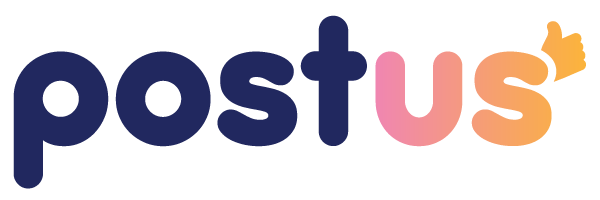One of the most critical aspects for individuals and businesses to get noticed is to create a constant online presence. Social media helps to spread the message about your products or services. It allows to connect with current and potential customers by posting content on different social media platforms. However, managing multiple social media platforms can be a daunting task, as there are many types of content, and each platform has its own users’ habits, algorithms, and best practices. To post on multiple platforms separately takes a lot of time and effort. And it’s also hard to keep up with the ever-changing social media landscape.
This is where AI-generated social media automation tools can help you. In this article, we’ll explore how to post simultaneously on multiple platforms using AI automation tools to reach a wider audience and save time.
What Is Posting on Multiple Platforms?
Posting on multiple platforms, or cross-posting is the act of posting the same content to multiple social media platforms. This can be done manually by copying and pasting content from one platform to another or automatically using a cross-posting tool.
The content for cross-posting can be text, images, videos, links, polls, referrals, testimonies, and stories. Instead of creating unique content for each platform, people share the same content across multiple platforms. Social media users employ cross-posting on social media to save time and effort.
Posting on multiple platforms is a powerful method to promote your product, reach a wider audience, and increase engagement. Simultaneous posting on multiple platforms can also help you to present your product to different age and interest groups of people and increase your sales.
By cross-posting on all your social media platforms at once, you can reach a much larger audience with minimal effort. This is especially good for businesses in the early stages when they need to launch their product, increase brand visibility, and gain new customers.
Cross-posting can be used by influencers to expand their reach and grow their following on different platforms.
Simultaneously posting on multiple platforms is also good for small businesses and large corporations, it can help to build brand awareness and establish a strong online presence.
However, each social media platform has its own requirements and nuances, so you should tailor your content to each platform accordingly.
Should You Post the Same Content on All Social Networks?
You should know that each of your social networks has its own requirements, demographics, type of content, audiences, and timings, varying from platform to platform. People use different platforms for different reasons.
Some content could be good for sharing your content with friends and family on platforms like Facebook, but the same content would not do the best on professional networks like LinkedIn.
Different audiences are active at different times, so you need to understand the best time to post to each platform to reach the widest audience and get the biggest engagement.
Different social media platforms have unique image specifications and character limits, for example:
- X (formerly Twitter) posts could have max 280 characters
- Facebook posts could have max 63,206 characters
- Instagram posts could have max 2,200 characters
- LinkedIn posts could have max 3,000 characters
- YouTube descriptions could have max 5,000 characters
- TikTok captions could have max 2,200 characters
- Pinterest description could have max 500 characters.
Obviously, the maximum character count is not necessarily the best.
With all of that said, posting on multiple platforms at once is widely used by both individual marketers and marketing agencies. No one has enough time to generate completely different content for each platform. Even if cross-posting could not deliver the best results if measured for each platform separately, the overall result of cross-posting will be better than not posting at all for some platforms.
Posting on multiple platforms at once has the following benefits:
- Saves time and effort. Cross-posting eliminates the need to always create new content for each platform. With the same time spent, you can reach a much wider audience.
- Increases brand visibility. Presenting your message across multiple platforms and for different groups of people can help you to increase your brand visibility.
- Grows of your followers. Simultaneously posting on multiple platforms, both individuals and businesses can gain new followers and increase engagement on their social media accounts.
How to Post on Multiple Platforms?
The reality is that social media managers often don’t have time to generate separate content for each platform. Fortunately, there are automation tools to simultaneously post on multiple platforms that can help to save time and customize the same content for the requirements of each platform.
Before posting on multiple social media platforms, you need to create your social media strategy:
- Identify the platforms you want to post on. Before you start posting on multiple social media platforms, you should decide which platforms you want to use. Consider the audience you want to reach and the type of content you want to share. Each platform has its own benefits, so the advantages of the platform should align with your goals. Nowadays the most popular platforms for business are Instagram, X (former Twitter), and Facebook.
- Generate, schedule, and publish content. After you have chosen the platforms you want to cross on, create your content and post it. Create a content calendar when you want to share it.
- Monitor and measure your performance. Once you execute your posting strategy, monitor and measure your results to see what’s working for you and what’s not.
- Use scheduling tools. Scheduling tools can help you to schedule your posts to be published on multiple platforms. You can also publish at different times to reach different audiences and avoid saturation.
Postus- a tool to simultaneously post on multiple platforms
Postus, the AI-powered social media assistant, can help you create, schedule, and publish content on multiple platforms at once. Postus simplifies social media management with automatic AI-generated posts. Schedule your posts in advance and share the same content across multiple platforms with just a few clicks.
The tool could be used to create, schedule, and publish content for Facebook, Instagram, and X (formerly Twitter). Features include multi-language support (30+ languages), mood selection (from formal to funny), and flexible scheduling.
Using Postus for posting on multiple platforms is easy.
First, sign up and create a Postus project.
Second, connect your social accounts to your Postus project.
Last, generate, schedule, and manage content postings.
That’s all, with Postus you can post on multiple platforms at once.
Frequently Asked Questions
Use automatic content generation and scheduling tools for posting on multiple platforms. Postus is one of such platforms. It is the AI-powered social media assistant, that can help you to create, schedule, and publish content on multiple platforms at once.
Each social network has its own requirements, demographics, type of content, audiences, interest, and timings, varying from platform to platform. So ideally you should tailor posts according to each social network. However, posting the same content on multiple platforms is widely used since no one has enough time to generate completely different content for each platform. Even if cross-posting could not deliver the best results if measured for each platform separately, the overall result of cross-posting will be better than not posting at all for some platforms. Postus is an AI-powered automated tool that can schedule and post content on multiple platforms.
Cross-posting is the act of posting the same content to multiple social media platforms. The content for cross-posting can be text, images, videos, links, polls, referrals, testimonies, and stories. It is a powerful method to promote your product, reach a wider audience, and increase engagement. You can use automated, AI-generative tools like Postus for cross-posting on multiple social media platforms.

